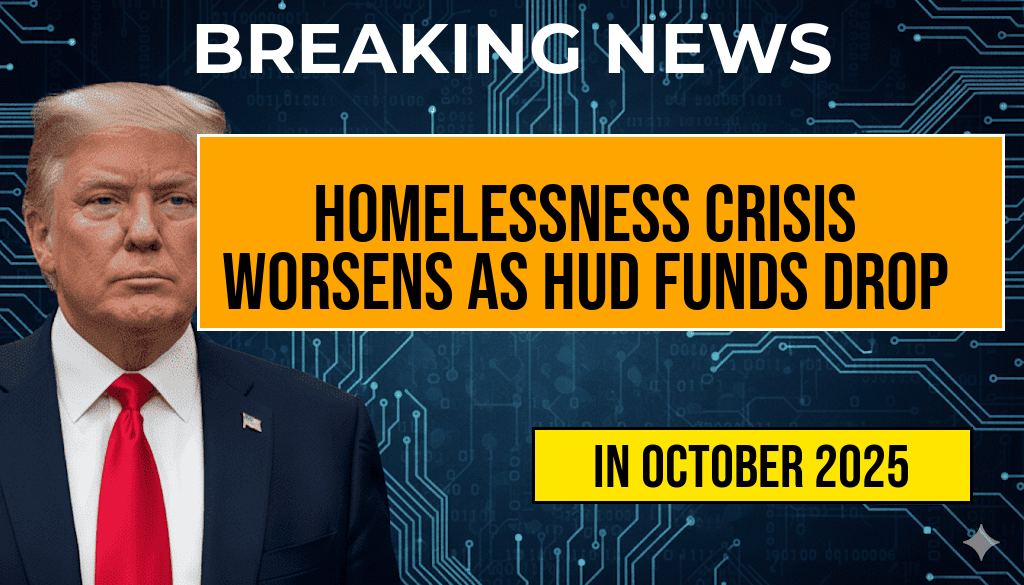The recent reduction in U.S. Department of Housing and Urban Development (HUD) funding has sent shockwaves through communities nationwide, as federal allocations plummet from $3.3 billion to just $1.1 billion—a decrease of approximately 67%. This dramatic cut threatens to undermine ongoing efforts to combat the nation’s persistent homelessness crisis, with local agencies warning that as many as $170,000 in critical funding could be at risk per jurisdiction. The sharp decline raises concerns about the ability of municipalities to sustain affordable housing initiatives, supportive services, and emergency shelter programs that are essential for vulnerable populations.
Funding Cuts and Their Impact on Homelessness Programs
Decreased Federal Support and Rising Unmet Needs
Since the 1980s, HUD has been a key federal partner in addressing homelessness, providing grants and flexible funding to states and local agencies. The recent budgetary reduction leaves many organizations scrambling to maintain existing services or expand outreach efforts. According to preliminary estimates, the reduction could result in the loss of hundreds of millions of dollars in vital programs nationwide, directly affecting thousands of individuals experiencing homelessness.
For example, HUD’s continuum of care grants support transitional housing, rapid rehousing, and permanent supportive housing. The funding cuts threaten to stall or dismantle these initiatives, potentially leading to increased shelter shortages and longer durations of homelessness for affected populations.
Local Authorities Sound the Alarm
Officials in several major cities have expressed concern over the impact of the budget cuts. In Los Angeles, where homelessness has reached crisis levels, city officials estimate that nearly $170,000 allocated for supportive services per jurisdiction could be jeopardized. This money is crucial for maintaining programs that assist individuals with mental health treatment, substance abuse recovery, and job placement.
Economic and Social Ramifications
Rising Homelessness and Community Stability
| Funding Category | Previous Funding ($) | Projected Funding ($) |
|---|---|---|
| Supportive Housing | $200,000 | $30,000 |
| Emergency Shelter | $150,000 | $50,000 |
| Rapid Rehousing | $100,000 | $20,000 |
| Support Services | $850,000 | $70,000 |
Experts warn that the decline in funding could lead to an increase in unsheltered homelessness, with vulnerable populations facing longer waits for assistance and greater exposure to health risks. The economic implications extend beyond individual hardship, potentially straining emergency services, healthcare systems, and law enforcement agencies in affected areas.
Federal Policy and Budget Priorities
The cutback reflects shifting federal priorities amid broader budget negotiations, with some policymakers arguing for reduced spending on social programs. Critics, however, emphasize that inadequate funding exacerbates social inequities and hampers long-term solutions to homelessness. Advocacy groups are urging Congress to revisit allocations, emphasizing the importance of stable, sustained investments in affordable housing and supportive services.
Community Responses and Future Outlook
Local Initiatives and Alternative Funding Sources
In response to the federal funding decline, several cities are exploring alternative strategies, including public-private partnerships, philanthropic support, and innovative housing models. Some municipalities are reallocating existing resources and seeking grants from state agencies or private foundations to fill the gap. Nonetheless, these efforts often face limitations in scope and scalability.
Calls for Policy Reversal and Increased Investment
Homelessness advocates and housing experts are calling on policymakers to prioritize funding for affordable housing, emphasizing that the current crisis requires urgent and sustained action. The National Low Income Housing Coalition and other organizations continue to lobby for increased federal investments, arguing that without adequate support, progress made in recent years could be lost.
Broader Context and Historical Perspective
The current funding reduction marks a significant departure from previous years, where increased federal support contributed to declines in homelessness in some regions. Historically, sustained investment has proven effective in reducing rates of homelessness, especially when combined with comprehensive policy strategies addressing housing affordability, healthcare, and social services. Experts warn that without renewed commitment, the recent downturn could reverse these gains and deepen the crisis.
For more information on federal homelessness programs and policy initiatives, visit Wikipedia’s overview on homelessness in the U.S..
Frequently Asked Questions
What is the main reason for the increase in homelessness according to the article?
The increase in homelessness is primarily due to the reduction in HUD funding, which has dropped from 3.3 billion to 1.1 billion, limiting resources available for homeless assistance programs.
How does the funding cut impact homeless services and programs?
The significant decrease in funding puts at risk approximately $170,000 in critical support, which may lead to reduced shelters, support services, and housing assistance for vulnerable populations.
What are the potential consequences of the funding decrease for homeless individuals?
The cut in funding could result in fewer available beds, limited access to essential services, and an overall worsening of the homelessness crisis in affected communities.
Are there any efforts or proposals to address the funding shortfall?
The article does not specify current efforts, but typically, government and community organizations advocate for increased funding and alternative solutions to mitigate the impact of budget cuts on homeless populations.
What can communities do to help address the homelessness crisis amid funding reductions?
Communities can mobilize local resources, support nonprofit organizations, and advocate for more federal funding to ensure adequate services and support for homeless individuals and families.






